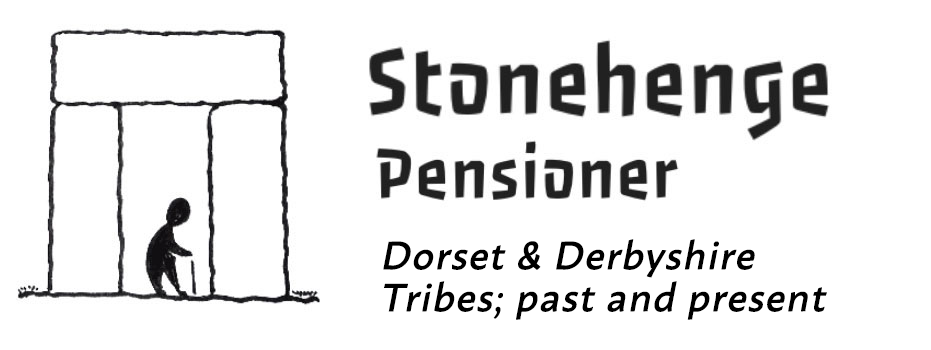Getting Fitter For The Over 60’s
This is a post on getting fitter for the over 60’s. I think I am qualified to discourse on this subject as a runner for over 50 years. However, what is fitter is perhaps a more difficult question. Firstly, I need to say that I am so lucky to even be able to run as my 76th birthday approaches. Ann runs with me and is 73 this year. We have now had 13 months running in the Peak District after moving here in December 2020. Our first challenge was the hills. There are few level runs and you are either running uphill or downhill. After years of running on the flat in Christchurch, Dorset, this came as a shock. Whatever, we must forget the past, forget what we used to do. For us oldies, keeping going is the only consideration.
Exercise diary
Firstly, let’s consider the exercise in my diary for 2021. We ran every other day and walked every day. The runs are 4 – 6 miles and the walks usually 3 – 6 miles. That amounted to 300 walks and 168 runs, a total of 976 miles of walking and 781 of running. Secondly, we never run on consecutive days, preferring to have a day for recovery. The recovery is a comfortable walk to condition our muscles. The shock ingredient is the overall climb, a total of 188,403 feet in 2021. That includes all running and walking. That means we ran or walked up the equivalent of Everest 6.4 times over the year. In truth, this running is much less than in the past. Long periods of 40 miles per week and, for me, 60 miles per week, were typical some three decades ago.
Getting a sweat
What is evident with exercise is that the entire body appears to modify in response to running. Blood cells migrate to the gut and other organs that might need immune system attention whilst the exercise occurs. If you test your blood immediately after exercise and then after recovery, it changes. If you believe that utilising all these bodily adaptions is healthy, then exercise will enhance your mood. Even simply sweating appears to remove toxins, whatever those might be. A word of caution. All the research on exercising is usually on elite young athletes. However, the impact on getting fitter for the over 60’s is less certain. Firstly, no matter what age you will deplete blood sugar. Secondly, as you exercise more you will utilise glycogen (sugar) from the muscles and subsequently replace it. This management of blood sugar seems to give runners many health benefits regardless of age.
The consequences
At the beginning of 2020 my pulse rate was 51 beats a minute. A year later it is 49. In my prime it was 38, perhaps even 36 at one stage. Both Ann and I now feel lightheaded if we bend down. Neither of us are on any medication. Our BP is normal, perhaps a little low for Ann. My leukaemia is indolent and I would like to think that this is because of my exercise. Compared to the past, I find myself very slow but ignore that. There is a balance between the cardio-vascular system and the body. My joints feel tight and I clearly have a lot of wear and tear, including arthritis. Pushing the body hurts both Ann and I. That means that it can be difficult to become really breathless. The body is hurting before the lungs reach their limit.
Muscles
You may be aware that muscles are important to our health, not least to our balance. Sarcopenia is a real danger to we oldies. It is quite feasible that we pensioners might train well and reduce our fat reserves but not our weight. Muscles weigh more than fat. Although I cannot prove it, I am convinced that both Ann and I have increased our muscle strength and bulk over the past year. However, I am aware that this might be purely down to all our hill climbing. Okay, my big thighs have not returned. But muscle definition is better and the six pack (rectus abdominis) is clearly evident in both of us.
Around the globe
I have kept a running diary for each of us over our running career. At the end of 2021 my total mileage was 72,183. That means I will have run three times around the world if keep going. However, at only 800 miles each year I have a few years still to go. Ann is on 48,101 miles and needs just two or three years to hit twice around the world. I have never had my bone density measured but I imagine it quite good. Ann had her’s tested some decades ago and she was 1.5 times the norm. That nasty osteoporosis is unlikely if you run and drink plenty of milk. Getting fitter for the over 60’s needs lots of calcium. Women are at greater risk.
Injury
All runners know that speed kills. All my injuries have arisen from running fast. For me, that is getting close to a 6 minute mile and for Ann 8 minutes. On the fells, a 12 – 15 mile rate would be typical. Due to lockdown we have not completed a parkrun in the Peak District so have no times to display. My 6 minute speed is only over a quarter mile. This was a flat tarmac path, point to point, and the target was inside 90 seconds. Ann aims for 2 minutes. We used to do this perhaps 6, even 8 times, with a rest between, in one session. This is called interval training. Many now call this HIIT (high intensity interval training). However, any short distance can be chosen and can include a hill. The times ought to be recorded and over months will show how your training is going. The trend is what matters.
The objective
In the past, my objective was to run more miles even faster. However, that is not feasible in getting fitter for the over 60’s and is a recipe for injury. I prefer to just run. Yes, I do try to sprint uphill on occasion or push the pace. I only do that on days when I feel good although they arise less than in the past. Ann and I find that the moment we run more than 20 miles in one week or over 5000′ of climbing, we become pretty tired. Okay, we might lift that level if we can keep running and avoid injury. However, you must recognise your own limits if you want to avoid injury. That said, a target is good. A parkrun, a specific race, a favourite run, anything to motivate you is good.
The routine
Because it is good to wake up in the morning aware that your body is going to run, you need to plan. Your body will get used to this. Neither do I think a lie-in is to be recommended, nor a fried breakfast. A regular rising time and emptying the bowels before you run is the perfect start. Neither of us, in our old age, like frosty air because it damages our lungs. We wait until the air has warmed, say by 11 am. We miss a day if it is too wet or if the ground is frozen or covered in snow. You do not want to fall down. That said, most runners fall at some point so be prepared. I also wear sports glasses and I think it keeps cold air and dust out of my eyes.
Getting fitter for the over 60’s
I have not forgotten just about the most important point, the one true expense of running, a pair of shoes. I doubt a decent pair can be purchased for less than £100. Buy at a shop that deals with runners and ask advice. They may not have a clue about getting fitter for the over 60’s but you do. Look after those legs, move that body. For Ann and I, our inspiration is the hills and dales of the Peak District. There is nothing to compare to a warm day and a wild track up to a summit or along a dale. We see buzzards, dippers and ravens and feel integral to nature. That glow last for days and puts us to sleep at night. Long may it last.




